|
Norse Holidays and Festivals The ancient Germanic/Norse year was
divided into two seasons: Summer and Winter. Summer began at the festival
of Eostre, close to the Spring Equinox, and Winter began at the festival
of Winternights, close to the Autumn Equinox. Between these two festivals
was the festival of Midsummer (Lithasblot) at the Summer Solstice, and the
festival of Jul (Yule), at the Winter Solstice. There are other minor
festivals that are celebrated in between these four major ones, listed
below in the table. |
|
| Jul 20 - 31 December
|
Celebration of
the Norse New Year; a festival of 12 nights. This is the most
important of all the Norse holidays. On the night of December 20,
the god Ingvi Freyr rides over the earth on the back of his shining boar,
bringing Light and Love back into the World. In later years, after
the influence of Christianity, the god Baldur, then Jesus, was reborn at
this festival. Jul signifies the beginning and end of all things;
the darkest time (shortest hour of daylight) during the year and the
brightest hope re-entering the world. During this festival, the Wild
Hunt is at its greatest fervor, and the dead are said to range the Earth
in its retinue. The god Wotan (Odin) is the leader of this Wild
Ride; charging across the sky on his eight-legged horse, Sleipnir; a very
awe-inspiring vision. In ancient times, Germanic and Norse children
would leave their boots out by the hearth on Solstice Eve, filled with hay
and sugar, for Sleipnir's journey. In return, Wotan would leave them
a gift for their kindness. In modern times, Sleipnir was changed to
a reindeer and the grey-bearded Wotan became the kindly Santa Claus
(Father Christmas).
|
| Thurseblot (Thor's Feast: Full Moon of January) |
Minor feast
honoring Thor, the protector of Midgard. During this time, the
height of the Storm season, Thor's power is invoked to drive back the
frost Jotuns so that Spring may return to Midgard.
|
| Disting 2 February
|
Festival of the
Idises, when the effects of Winter are beginning to lessen and the world
prepares itself for Spring. Corresponds to the pagan holiday of Imbolc.
Disting is characterized by preparing the land for planting. In
ancient times, Disting was the time when the cattle were counted and one's
wealth was tallied; thus making it a festival of finance as well. It
was said that new calves born during Disting were a sign of great
prosperity for the coming year.
|
| Valisblot 14 February |
Many modern
Asatruar celebrate Valisblot, or Vali's Feast, even though there is no
historical precedent for associating Odin's youngest son with this
festival; other than the name Vali associated with "Valentine."
The hero Svenfjotli, son of Sigimund, was reputed to have been born at
this time, and often blots are drunk to him as well.
|
| Ostara 20-21 March
|
Festival of Ostara (Eostre), the Spring Goddess. This is a festival of renewal, rejoicing and fertility, although for most of the Northern People, the forces of Winter are still at full sway. In ancient times, the gift of colored eggs to one's friends and loved ones was a way of wishing them well for the coming season; a magical ritual of prosperity and fecundity. The rabbit was the symbol of this festival as well because of it's re-emergence during this season, and for its reproductive ability. These two rituals have survived into the modern holiday of Easter (which derives its name from Eostre) as Easter eggs and the Easter bunny. Like most ancient heathen rituals, they are relegated into the world of children; held for naught among adults; but the race memory lingers on. |
| Walpurgis/ Thrimilci 22 April - 1 May
|
The festival of
Walpurgis, a night both of revelry and darkness. The nine nights of
April 22 (interestingly enough, the modern festival of Earth Day) to April
30 are venerated as rememberance of the AllFather's self-sacrifice upon
the World Tree Yggdrasil. It was on the ninth night (April 30,
Walpurgisnacht) that he beheld the Runes, grasped them, and ritually died
for an instant. At that moment, all the Light in the 9 worlds is
extinguished, and utter Chaos reigns. At the final stroke of
midnight, the Light returns in dazzling brilliance, and the bale-fires are
lit. On Walpurgisnacht, the dead have full sway upon the earth; it
is the ending night of the Wild Hunt. May 1 is the festival of
Thrimilci; the beginning of Summer. Thrimilci is a festival of joy
and fertility, much like Ostara; however, most of the Northern World is
finally escaping from the snow at this time.
|
| Einherjar 30 May |
Minor modern
Asatru festival honoring the warriors who fell during battle and who
asceded to Valhalla's halls. Corresponds with the modern American
holiday of Memorial Day.
|
| Sigurdsblot 9 June |
Minor festival
honoring Sigurd (Sigifrith or Siegfreid), the great hero who slayed the
dragon Fafnir and won back the treasure of the Rhine.
|
| Midsummer 20-21 June
|
Celebration of the Summer Solstice, when the power of the Sun is at its height. It was at this time that most foreign trade was conducted, as well as shipping, fishing expeditions, and raiding. Thus, Midsummer was the festival of power and activity. It was not without its dark side as well. Midsummer was recognized as the longest day of the year; thus, the year began to age after this time and the days grow progressively shorter. The god Baldur is said to have been sacrificed at this time, but is reborn at Jul; the hero Sigurd was also said to have been slain by treachery at Midsummer by his blood-brothers Hagan and Gunthur (Gundahar). |
| Lithasblot 31 July - 1 August
|
The harvest
festival; giving thanks to Urda (Ertha) for her bounty. Often alms are
given to the unfortunate at this time, or loaves in the shape of the
fylfot (the Sun-wheel, which fell into regrettable disrepute during the
dark times of the second World War when the symbol was perverted as a
symbol of chaos and darkeness). Interestingly, Lithasblot 1941 was
allegedly the time when the magical lodges of England performed rituals to
keep the Nazi forces from invading their country; which may have worked,
since Hitler eventually abandoned plans to invade Great Britain.
Lithasblot has long been associated with ceremonial magic and magical
workings.
|
| Harvest End (Mabon) 22-23 September |
Mabon is a minor
blot acknowledging the end of the Harvest Season, also associate with
vintage and mead-making. Most people held off the full celebration
of this holiday, though, until the main festival of Winternights.
|
| Winternights 29 October - 2 November
|
The beginning of
the winter season for the Northern folk. Rememberances of the dead
and one's ancestors were made during this feast. Winternights was a
ceremony of wild abandon; much like the Carnivale season in the
Mediterranean countries, and it marked the end of the summer season of
commerce and travel and the beginning of the winter season of hunting.
Much divination was done during Winternights to foretell the fates of
those entering the coming year. It was said that if one sat on a
barrow-mound (grave) all night long on Winternights, one would have full
divinatory, shamanic (galdr and seith), and bardic (skaldr) powers . . .
that is, if one retained one's sanity! Winternights marked the
beginning of the Wild Hunt, which would continue until Walpurgisnacht.
This festival corresponds roughly to the Celtic Samhain, and the modern
American festival of Halloween, although the darker aspects of the
festival are not as pronounced among the Norse people. (The Norse
festival of darkness was Walpurgis, a full 6 months away).
|






